
HackBot
AI-powered cybersecurity chatbot designed to provide helpful and accurate answers to your cybersecurity-related queries and also do code analysis and scan analysis.
Stars: 232

HackBot is an AI-powered cybersecurity chatbot designed to provide accurate answers to cybersecurity-related queries, conduct code analysis, and scan analysis. It utilizes the Meta-LLama2 AI model through the 'LlamaCpp' library to respond coherently. The chatbot offers features like local AI/Runpod deployment support, cybersecurity chat assistance, interactive interface, clear output presentation, static code analysis, and vulnerability analysis. Users can interact with HackBot through a command-line interface and utilize it for various cybersecurity tasks.
README:
_ _ _ ____ _
| | | | __ _ ___| | _| __ ) ___ | |_
| |_| |/ _` |/ __| |/ / _ \ / _ \| __| By: Morpheuslord
| _ | (_| | (__| <| |_) | (_) | |_ AI used: Meta-LLama2
|_| |_|\__,_|\___|_|\_\____/ \___/ \__|
Welcome to HackBot, an AI-powered cybersecurity chatbot designed to provide helpful and accurate answers to your cybersecurity-related queries and also do code analysis and scan analysis. Whether you are a security researcher, an ethical hacker, or just curious about cybersecurity, HackBot is here to assist you in finding the information you need.
HackBot utilizes the powerful language model Meta-LLama2 through the "LlamaCpp" library. This allows HackBot to respond to your questions in a coherent and relevant manner. Please make sure to keep your queries in English and adhere to the guidelines provided to get the best results from HackBot.
- Local AI/ Runpod Deployment Support: I have added an option using which you can easily deploy the Hackbot chat interface and use llama in 2 ways:
-
Using RunPod: You can use runpod serverless endpoint deployment of llama and connect them to the chatbot by changing the
AI_OPTIONsection of the .env file forRunpod you need to use RUNPODand forLocal Llama deployment LOCALLLAMA.RUNPOD&LOCALLLAMA -
Key Notes: For the runpod version of the llama to work you need to make sure the
RUNPOD IDand yourRUNPOD API KEYare set. - AI Cybersecurity Chat: HackBot can answer various cybersecurity-related queries, helping you with penetration testing, security analysis, and more.
- Interactive Interface: The chatbot provides an interactive command-line interface, making it easy to have conversations with HackBot.
- Clear Output: HackBot presents its responses in a well-formatted markdown, providing easily readable and organized answers.
- Static Code Analysis: Utilizes the provided scan data or log file for conducting static code analysis. It thoroughly examines the source code without executing it, identifying potential vulnerabilities, coding errors, and security issues.
- Vulnerability Analysis: Performs a comprehensive vulnerability analysis using the provided scan data or log file. It identifies and assesses security weaknesses, misconfigurations, and potential exploits present in the target system or network.
Using LLama2 is one of the best offline and free options out there. It is currently under improvement I am working on a prompt that will better incorporate cybersecurity perspective into the AI. I have to thank @thisserand and his llama2_local repo and also his YT video YT_Video. They were great resources. To be frank the llama2 code is 95% his, I just yanked the code and added a Flask API functionality to it.
The Accuracy of the AI offline and outside the codes test was great and had equal accuracy to openai or bard but while in code it was facing a few issues may be because of the prompting and all. I will try and fix it.
The speed depends on your system and the GPU and CPU configs you have. currently, it is using the TheBloke/Llama-2-7B-Chat-GGML model and can be changed via the portscanner and dnsrecon files.
For now, the llama code and scans are handled differently. After a few tests, I found out llama needs to be trained a little to operate like how I intended it to work so it needs some time. Any suggestions on how I can do that can be added to the discussions of this repo Discussions Link. For now, the output won't be a divided list of all the data instead will be an explanation of the vulnerability or issues discovered by the AI.
The prompt for the model usage looks like this:
[INST] <<SYS>> {user_instruction}<</SYS>> NMAP Data to be analyzed: {user_message} [/INST]
The instructions looks like this:
Do a NMAP scan analysis on the provided NMAP scan information. The NMAP output must return in a asked format accorging to the provided output format. The data must be accurate in regards towards a pentest report.
The data must follow the following rules:
1) The NMAP scans must be done from a pentester point of view
2) The final output must be minimal according to the format given.
3) The final output must be kept to a minimal.
4) If a value not found in the scan just mention an empty string.
5) Analyze everything even the smallest of data.
6) Completely analyze the data provided and give a confirm answer using the output format.
7) mention all the data you found in the output format provided so that regex can be used on it.
8) avoid unnecessary explaination.
9) the critical score must be calculated based on the CVE if present or by the nature of the services open
10) the os information must contain the OS used my the target.
11) the open ports must include all the open ports listed in the data[tcp] and varifying if it by checking its states value. you should not negect even one open port.
12) the vulnerable services can be determined via speculation of the service nature or by analyzing the CVE's found.
The output format:
critical score:
- Give info on the criticality
"os information":
- List out the OS information
"open ports and services":
- List open ports
- List open ports services
"vulnerable service":
- Based on CVEs or nature of the ports opened list the vulnerable services
"found cve":
- List the CVE's found and list the main issues.
Using the instruction set and the data provided via the prompt the llama AI generates its output.
For the most usage I suggest you create an runpod serverless endpoit deployment of llama you can refer this tutorial for that tutorial. Follow the tutorial for better use.
Before you proceed with the installation, ensure you have the following prerequisites:
- Python (3.11 or later)
-
pip3package manager -
Visual studio Code- Follow the steps in this link llama-cpp-prereq-install-instructions cmake
git clone https://github.com/morpheuslord/hackbot.git
cd hackbotpip3 install -r requirements.txtpython3 hackbot.pyThe first time you run HackBot, it will check for the AI model required for the chatbot. If the model is not present, it will be automatically downloaded and saved as "llama-2-7b-chat.ggmlv3.q4_0.bin" in the project directory.
To start a conversation with HackBot, run the following command:
The .env file must look like this:
RUNPOD_ENDPOINT_ID = ""
RUNPOD_API_KEY = ""
AI_OPTION = "LLAMALOCAL"After that is done run this.
python hackbot.pyThe .env file must look like this:
RUNPOD_ENDPOINT_ID = "<<SERVERLESS ENDPOINT ID>>"
RUNPOD_API_KEY = "<<RUNPOD API KEY>>"
AI_OPTION = "RUNPOD"After that is done run this.
python3 hackbot.pyHackBot will display a banner and wait for your input. You can ask cybersecurity-related questions, and HackBot will respond with informative answers. To exit the chat, simply type "quit_bot" in the input prompt.
Here are some additional commands you can use:
-
clear_screen: Clears the console screen for better readability. -
quit_bot: This is used to quit the chat application -
bot_banner: Prints the default bots banner. -
contact_dev: Provides my contact information. -
save_chat: Saves the current session interactions. -
vuln_analysis: Does a Vuln analysis using the scan data or log file. -
static_code_analysis: Does a Static code analysis using the scan data or log file.
Note: I am working on more addons and more such commands to give a more chatGPT experience
Please Note: HackBot's responses are based on the Meta-LLama2 AI model, and its accuracy depends on the quality of the queries and data provided to it.
I am also working on AI training by which I can teach it how to be more accurately tuned to work for hackers on a much more professional level.
We welcome contributions to improve HackBot's functionality and accuracy. If you encounter any issues or have suggestions for enhancements, please feel free to open an issue or submit a pull request. Follow these steps to contribute:
- Fork the repository.
- Create a new branch with a descriptive name.
- Make your changes and commit them.
- Push your changes to your forked repository.
- Open a pull request to the
mainbranch of this repository.
Please maintain a clean commit history and adhere to the project's coding guidelines.
If anyone with the know-how of training text generation models can help improve the code. For the AI training part, I have prepared a dataset and a working code for the training but I am facing issues with the training part and collaboration on that will be appreciated. You can view the dataset on :
The Github version of the dataset is for the OpenAI training and the other is for Llama2-7b from meta. The AIM of the dataset is to try and possibly generate an AI model capable enough to better work with CVE data. If you feel the dataset is lacking then feel free to modify and share your views.
For any questions, feedback, or inquiries related to HackBot, feel free to contact the project maintainer:
- Email: [email protected]
- Twitter: @morpheuslord2
- LinkedIn: ChiranjeeviG
For Tasks:
Click tags to check more tools for each tasksFor Jobs:
Alternative AI tools for HackBot
Similar Open Source Tools

HackBot
HackBot is an AI-powered cybersecurity chatbot designed to provide accurate answers to cybersecurity-related queries, conduct code analysis, and scan analysis. It utilizes the Meta-LLama2 AI model through the 'LlamaCpp' library to respond coherently. The chatbot offers features like local AI/Runpod deployment support, cybersecurity chat assistance, interactive interface, clear output presentation, static code analysis, and vulnerability analysis. Users can interact with HackBot through a command-line interface and utilize it for various cybersecurity tasks.

airbroke
Airbroke is an open-source error catcher tool designed for modern web applications. It provides a PostgreSQL-based backend with an Airbrake-compatible HTTP collector endpoint and a React-based frontend for error management. The tool focuses on simplicity, maintaining a small database footprint even under heavy data ingestion. Users can ask AI about issues, replay HTTP exceptions, and save/manage bookmarks for important occurrences. Airbroke supports multiple OAuth providers for secure user authentication and offers occurrence charts for better insights into error occurrences. The tool can be deployed in various ways, including building from source, using Docker images, deploying on Vercel, Render.com, Kubernetes with Helm, or Docker Compose. It requires Node.js, PostgreSQL, and specific system resources for deployment.
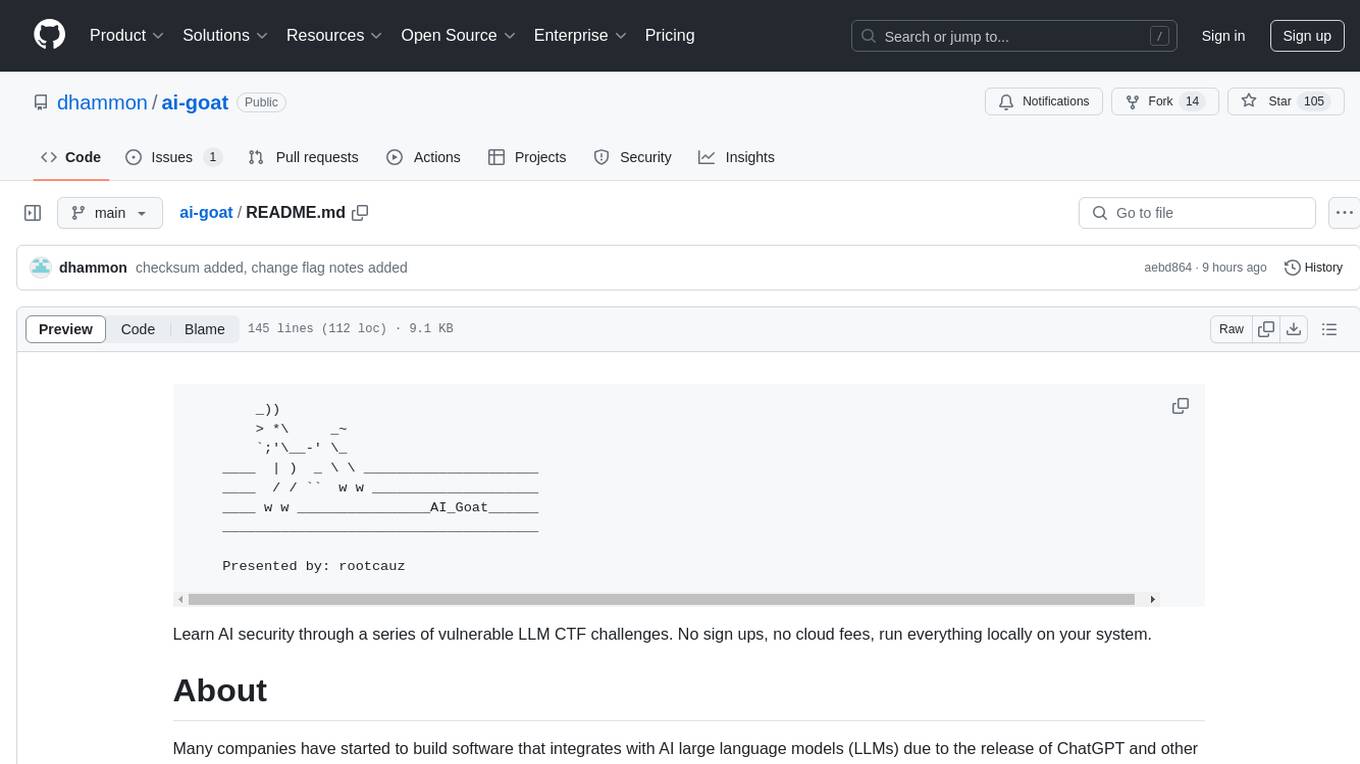
ai-goat
AI Goat is a tool designed to help users learn about AI security through a series of vulnerable LLM CTF challenges. It allows users to run everything locally on their system without the need for sign-ups or cloud fees. The tool focuses on exploring security risks associated with large language models (LLMs) like ChatGPT, providing practical experience for security researchers to understand vulnerabilities and exploitation techniques. AI Goat uses the Vicuna LLM, derived from Meta's LLaMA and ChatGPT's response data, to create challenges that involve prompt injections, insecure output handling, and other LLM security threats. The tool also includes a prebuilt Docker image, ai-base, containing all necessary libraries to run the LLM and challenges, along with an optional CTFd container for challenge management and flag submission.

cluster-toolkit
Cluster Toolkit is an open-source software by Google Cloud for deploying AI/ML and HPC environments on Google Cloud. It allows easy deployment following best practices, with high customization and extensibility. The toolkit includes tutorials, examples, and documentation for various modules designed for AI/ML and HPC use cases.

reai-ida
RevEng.AI IDA Pro Plugin is a tool that integrates with the RevEng.AI platform to provide various features such as uploading binaries for analysis, downloading analysis logs, renaming function names, generating AI summaries, synchronizing functions between local analysis and the platform, and configuring plugin settings. Users can upload files for analysis, synchronize function names, rename functions, generate block summaries, and explain function behavior using this plugin. The tool requires IDA Pro v8.0 or later with Python 3.9 and higher. It relies on the 'reait' package for functionality.

aisheets
Hugging Face AI Sheets is an open-source tool for building, enriching, and transforming datasets using AI models with no code. It can be deployed locally or on the Hub, providing access to thousands of open models. Users can easily generate datasets, run data generation scripts, and customize inference endpoints for text generation. The tool supports custom LLMs and offers advanced configuration options for authentication, inference, and miscellaneous settings. With AI Sheets, users can leverage the power of AI models without writing any code, making dataset management and transformation efficient and accessible.

azure-search-openai-javascript
This sample demonstrates a few approaches for creating ChatGPT-like experiences over your own data using the Retrieval Augmented Generation pattern. It uses Azure OpenAI Service to access the ChatGPT model (gpt-35-turbo), and Azure AI Search for data indexing and retrieval.

gpt-subtrans
GPT-Subtrans is an open-source subtitle translator that utilizes large language models (LLMs) as translation services. It supports translation between any language pairs that the language model supports. Note that GPT-Subtrans requires an active internet connection, as subtitles are sent to the provider's servers for translation, and their privacy policy applies.
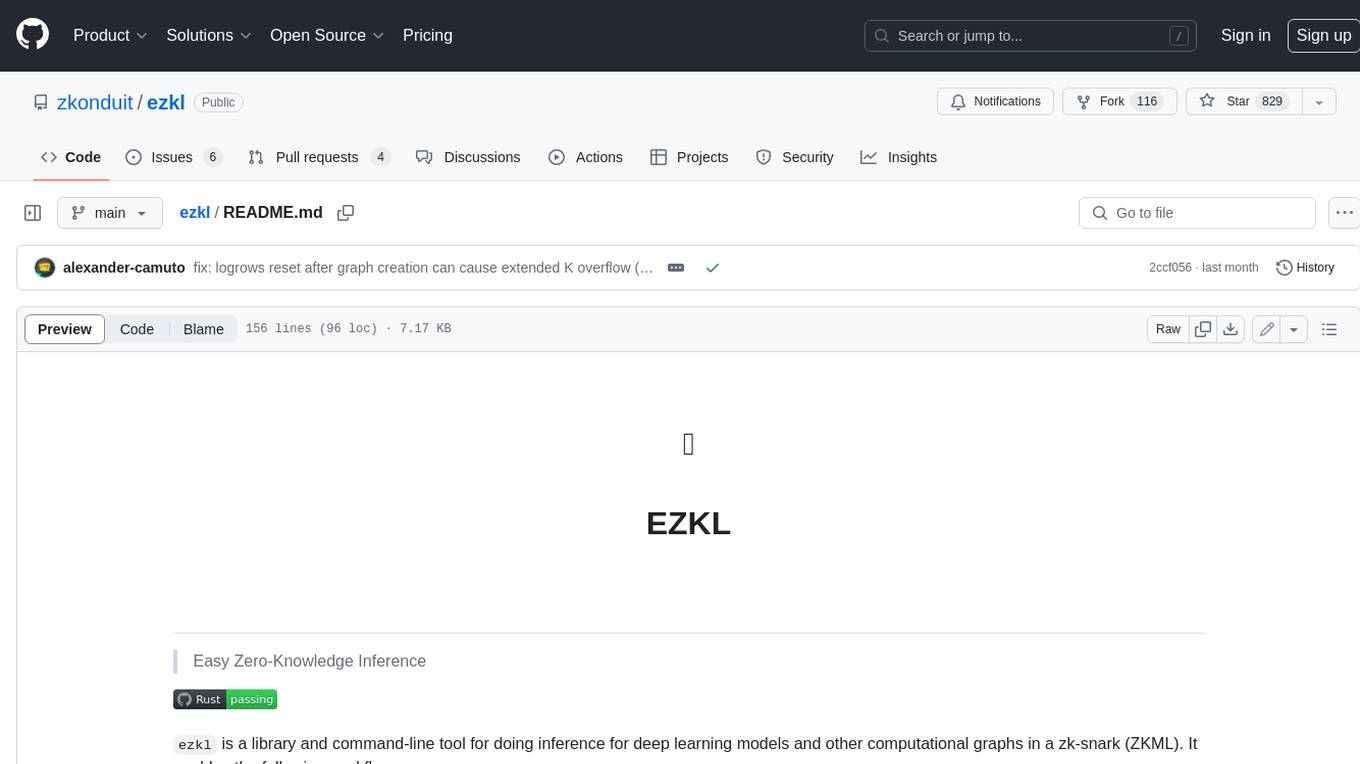
ezkl
EZKL is a library and command-line tool for doing inference for deep learning models and other computational graphs in a zk-snark (ZKML). It enables the following workflow: 1. Define a computational graph, for instance a neural network (but really any arbitrary set of operations), as you would normally in pytorch or tensorflow. 2. Export the final graph of operations as an .onnx file and some sample inputs to a .json file. 3. Point ezkl to the .onnx and .json files to generate a ZK-SNARK circuit with which you can prove statements such as: > "I ran this publicly available neural network on some private data and it produced this output" > "I ran my private neural network on some public data and it produced this output" > "I correctly ran this publicly available neural network on some public data and it produced this output" In the backend we use the collaboratively-developed Halo2 as a proof system. The generated proofs can then be verified with much less computational resources, including on-chain (with the Ethereum Virtual Machine), in a browser, or on a device.

llamafile
llamafile is a tool that enables users to distribute and run Large Language Models (LLMs) with a single file. It combines llama.cpp with Cosmopolitan Libc to create a framework that simplifies the complexity of LLMs into a single-file executable called a 'llamafile'. Users can run these executable files locally on most computers without the need for installation, making open LLMs more accessible to developers and end users. llamafile also provides example llamafiles for various LLM models, allowing users to try out different LLMs locally. The tool supports multiple CPU microarchitectures, CPU architectures, and operating systems, making it versatile and easy to use.
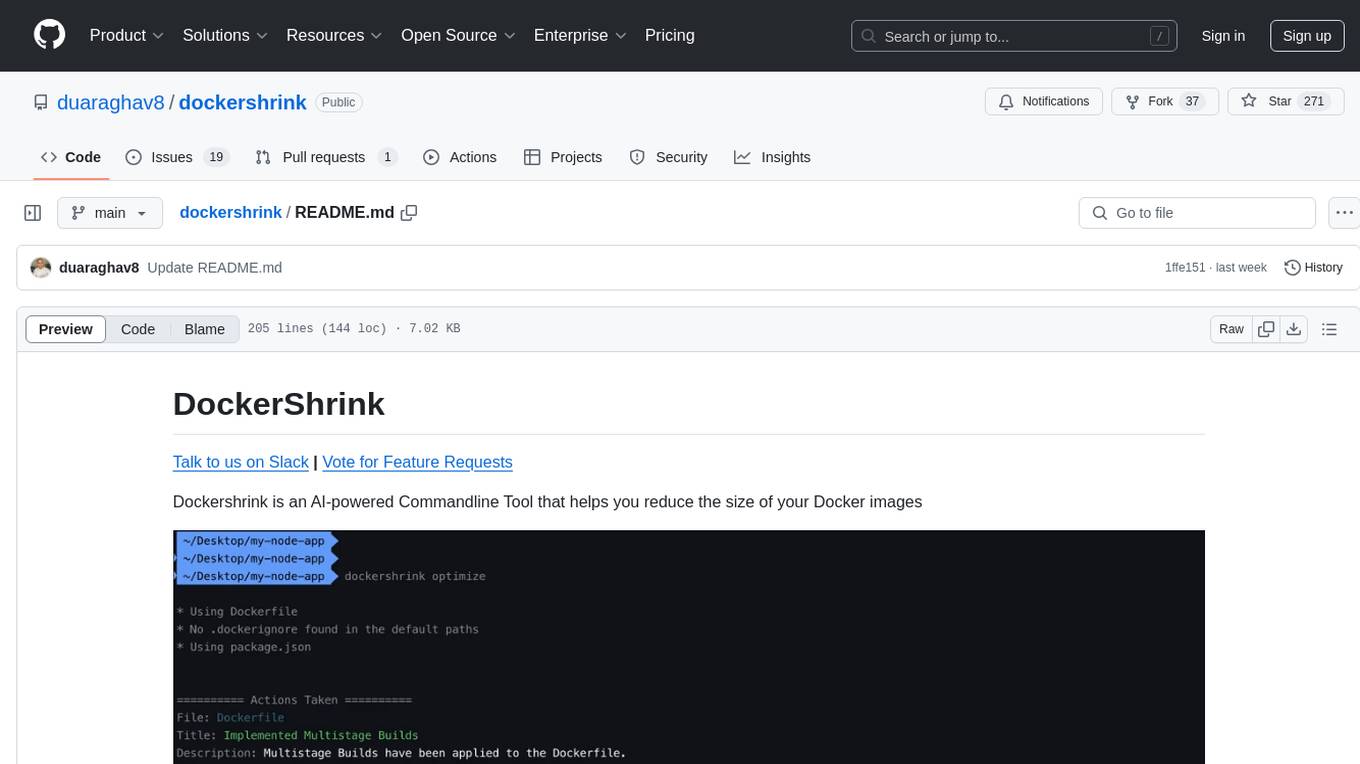
dockershrink
Dockershrink is an AI-powered Commandline Tool designed to help reduce the size of Docker images. It combines traditional Rule-based analysis with Generative AI techniques to optimize Image configurations. The tool supports NodeJS applications and aims to save costs on storage, data transfer, and build times while increasing developer productivity. By automatically applying advanced optimization techniques, Dockershrink simplifies the process for engineers and organizations, resulting in significant savings and efficiency improvements.

serverless-pdf-chat
The serverless-pdf-chat repository contains a sample application that allows users to ask natural language questions of any PDF document they upload. It leverages serverless services like Amazon Bedrock, AWS Lambda, and Amazon DynamoDB to provide text generation and analysis capabilities. The application architecture involves uploading a PDF document to an S3 bucket, extracting metadata, converting text to vectors, and using a LangChain to search for information related to user prompts. The application is not intended for production use and serves as a demonstration and educational tool.

reai-ghidra
The RevEng.AI Ghidra Plugin by RevEng.ai allows users to interact with their API within Ghidra for Binary Code Similarity analysis to aid in Reverse Engineering stripped binaries. Users can upload binaries, rename functions above a confidence threshold, and view similar functions for a selected function.

raggenie
RAGGENIE is a low-code RAG builder tool designed to simplify the creation of conversational AI applications. It offers out-of-the-box plugins for connecting to various data sources and building conversational AI on top of them, including integration with pre-built agents for actions. The tool is open-source under the MIT license, with a current focus on making it easy to build RAG applications and future plans for maintenance, monitoring, and transitioning applications from pilots to production.

Mapperatorinator
Mapperatorinator is a multi-model framework that uses spectrogram inputs to generate fully featured osu! beatmaps for all gamemodes and assist modding beatmaps. The project aims to automatically generate rankable quality osu! beatmaps from any song with a high degree of customizability. The tool is built upon osuT5 and osu-diffusion, utilizing GPU compute and instances on vast.ai for development. Users can responsibly use AI in their beatmaps with this tool, ensuring disclosure of AI usage. Installation instructions include cloning the repository, creating a virtual environment, and installing dependencies. The tool offers a Web GUI for user-friendly experience and a Command-Line Inference option for advanced configurations. Additionally, an Interactive CLI script is available for terminal-based workflow with guided setup. The tool provides generation tips and features MaiMod, an AI-driven modding tool for osu! beatmaps. Mapperatorinator tokenizes beatmaps, utilizes a model architecture based on HF Transformers Whisper model, and offers multitask training format for conditional generation. The tool ensures seamless long generation, refines coordinates with diffusion, and performs post-processing for improved beatmap quality. Super timing generator enhances timing accuracy, and LoRA fine-tuning allows adaptation to specific styles or gamemodes. The project acknowledges credits and related works in the osu! community.

azure-ai-foundry-baseline
This repository serves as a reference implementation for running a chat application and an AI orchestration layer using Azure AI Foundry Agent service and OpenAI foundation models. It covers common generative AI chat application characteristics such as creating agents, querying data stores, chat memory database, orchestration logic, and calling language models. The implementation also includes production requirements like network isolation, Azure AI Foundry Agent Service dependencies, availability zone reliability, and limiting egress network traffic with Azure Firewall.
For similar tasks

Academic_LLM_Sec_Papers
Academic_LLM_Sec_Papers is a curated collection of academic papers related to LLM Security Application. The repository includes papers sorted by conference name and published year, covering topics such as large language models for blockchain security, software engineering, machine learning, and more. Developers and researchers are welcome to contribute additional published papers to the list. The repository also provides information on listed conferences and journals related to security, networking, software engineering, and cryptography. The papers cover a wide range of topics including privacy risks, ethical concerns, vulnerabilities, threat modeling, code analysis, fuzzing, and more.

HackBot
HackBot is an AI-powered cybersecurity chatbot designed to provide accurate answers to cybersecurity-related queries, conduct code analysis, and scan analysis. It utilizes the Meta-LLama2 AI model through the 'LlamaCpp' library to respond coherently. The chatbot offers features like local AI/Runpod deployment support, cybersecurity chat assistance, interactive interface, clear output presentation, static code analysis, and vulnerability analysis. Users can interact with HackBot through a command-line interface and utilize it for various cybersecurity tasks.

vulnerability-analysis
The NVIDIA AI Blueprint for Vulnerability Analysis for Container Security showcases accelerated analysis on common vulnerabilities and exposures (CVE) at an enterprise scale, reducing mitigation time from days to seconds. It enables security analysts to determine software package vulnerabilities using large language models (LLMs) and retrieval-augmented generation (RAG). The blueprint is designed for security analysts, IT engineers, and AI practitioners in cybersecurity. It requires NVAIE developer license and API keys for vulnerability databases, search engines, and LLM model services. Hardware requirements include L40 GPU for pipeline operation and optional LLM NIM and Embedding NIM. The workflow involves LLM pipeline for CVE impact analysis, utilizing LLM planner, agent, and summarization nodes. The blueprint uses NVIDIA NIM microservices and Morpheus Cybersecurity AI SDK for vulnerability analysis.

Mirror-Flowers
Mirror Flowers is an out-of-the-box code security auditing tool that integrates local static scanning (line-level taint tracking + AST) with AI verification to help quickly discover and locate high-risk issues, providing repair suggestions. It supports multiple languages such as PHP, Python, JavaScript/TypeScript, and Java. The tool offers both single-file and project modes, with features like concurrent acceleration, integrated UI for visual results, and compatibility with multiple OpenAI interface providers. Users can configure the tool through environment variables or API, and can utilize it through a web UI or HTTP API for tasks like single-file auditing or project auditing.
For similar jobs

ciso-assistant-community
CISO Assistant is a tool that helps organizations manage their cybersecurity posture and compliance. It provides a centralized platform for managing security controls, threats, and risks. CISO Assistant also includes a library of pre-built frameworks and tools to help organizations quickly and easily implement best practices.

PurpleLlama
Purple Llama is an umbrella project that aims to provide tools and evaluations to support responsible development and usage of generative AI models. It encompasses components for cybersecurity and input/output safeguards, with plans to expand in the future. The project emphasizes a collaborative approach, borrowing the concept of purple teaming from cybersecurity, to address potential risks and challenges posed by generative AI. Components within Purple Llama are licensed permissively to foster community collaboration and standardize the development of trust and safety tools for generative AI.

vpnfast.github.io
VPNFast is a lightweight and fast VPN service provider that offers secure and private internet access. With VPNFast, users can protect their online privacy, bypass geo-restrictions, and secure their internet connection from hackers and snoopers. The service provides high-speed servers in multiple locations worldwide, ensuring a reliable and seamless VPN experience for users. VPNFast is easy to use, with a user-friendly interface and simple setup process. Whether you're browsing the web, streaming content, or accessing sensitive information, VPNFast helps you stay safe and anonymous online.
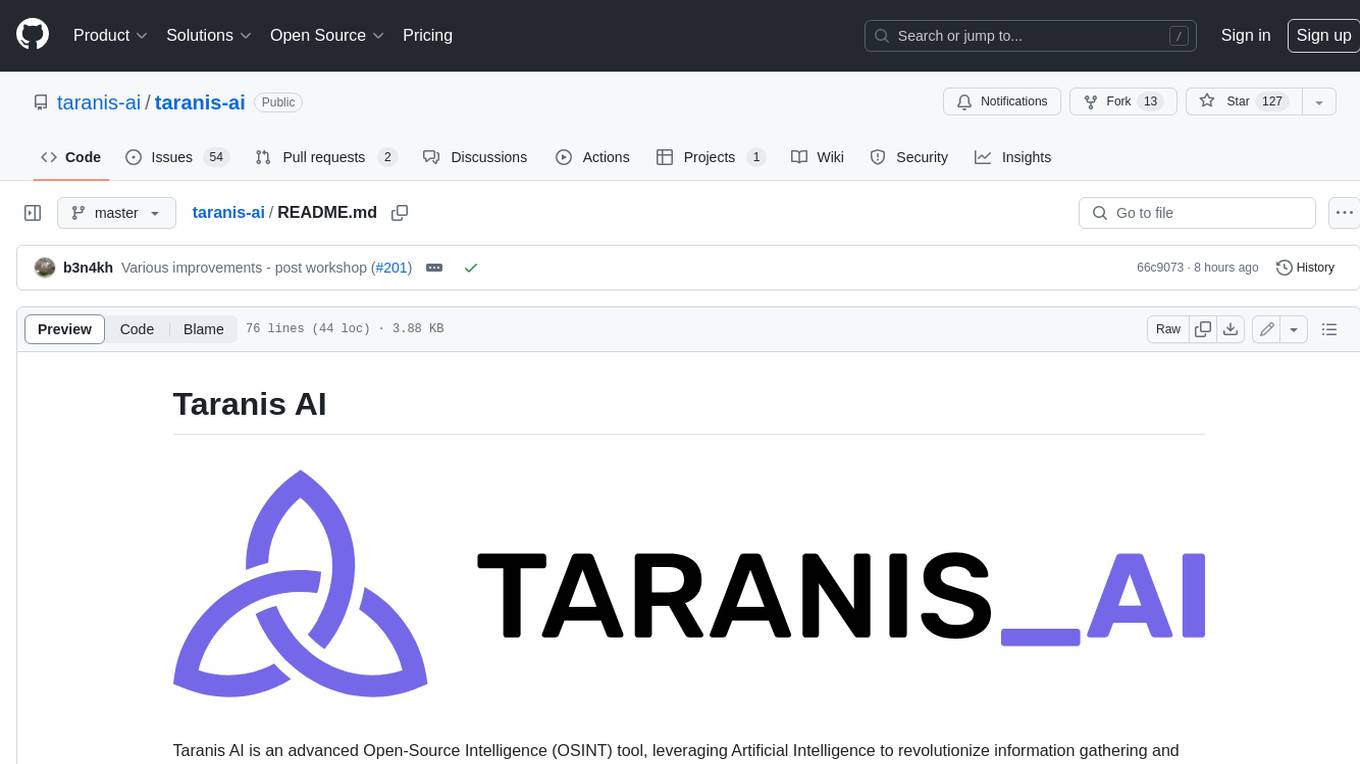
taranis-ai
Taranis AI is an advanced Open-Source Intelligence (OSINT) tool that leverages Artificial Intelligence to revolutionize information gathering and situational analysis. It navigates through diverse data sources like websites to collect unstructured news articles, utilizing Natural Language Processing and Artificial Intelligence to enhance content quality. Analysts then refine these AI-augmented articles into structured reports that serve as the foundation for deliverables such as PDF files, which are ultimately published.

NightshadeAntidote
Nightshade Antidote is an image forensics tool used to analyze digital images for signs of manipulation or forgery. It implements several common techniques used in image forensics including metadata analysis, copy-move forgery detection, frequency domain analysis, and JPEG compression artifacts analysis. The tool takes an input image, performs analysis using the above techniques, and outputs a report summarizing the findings.

h4cker
This repository is a comprehensive collection of cybersecurity-related references, scripts, tools, code, and other resources. It is carefully curated and maintained by Omar Santos. The repository serves as a supplemental material provider to several books, video courses, and live training created by Omar Santos. It encompasses over 10,000 references that are instrumental for both offensive and defensive security professionals in honing their skills.
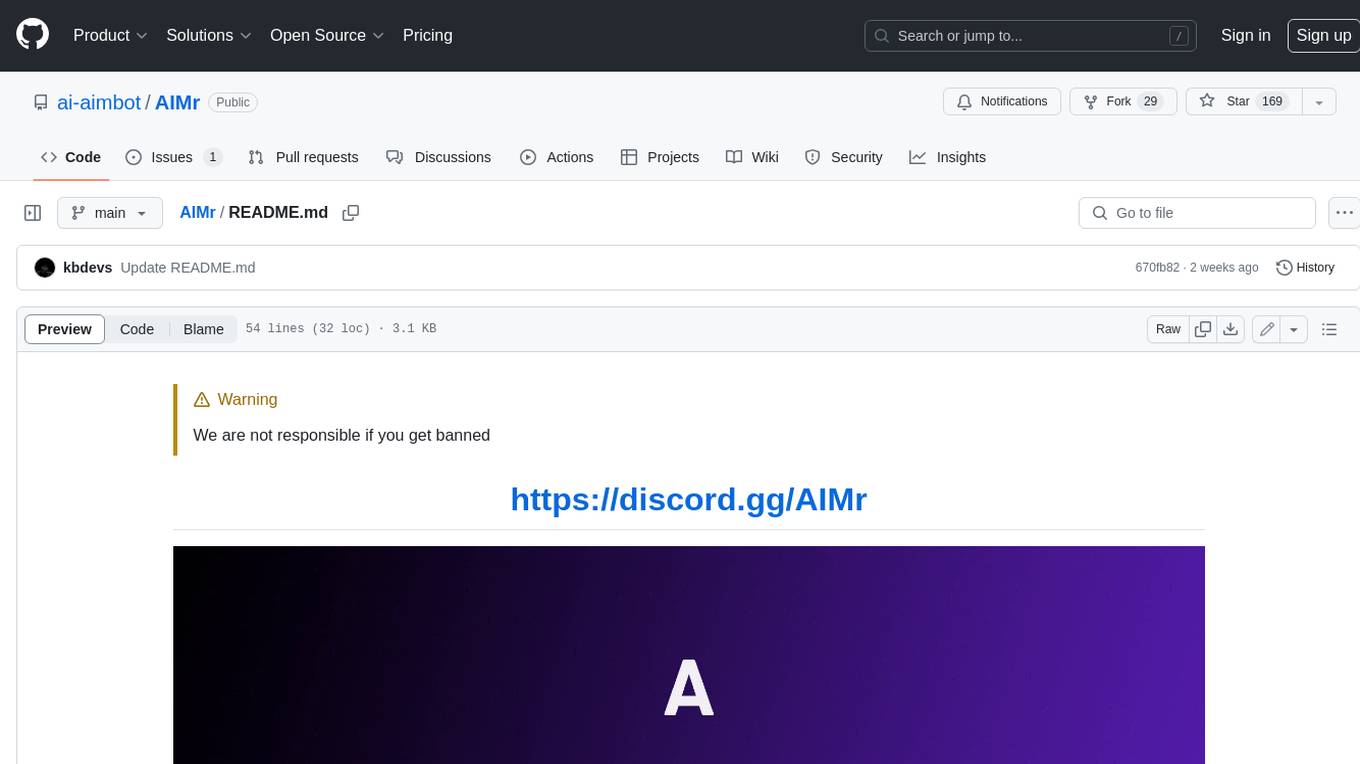
AIMr
AIMr is an AI aimbot tool written in Python that leverages modern technologies to achieve an undetected system with a pleasing appearance. It works on any game that uses human-shaped models. To optimize its performance, users should build OpenCV with CUDA. For Valorant, additional perks in the Discord and an Arduino Leonardo R3 are required.

admyral
Admyral is an open-source Cybersecurity Automation & Investigation Assistant that provides a unified console for investigations and incident handling, workflow automation creation, automatic alert investigation, and next step suggestions for analysts. It aims to tackle alert fatigue and automate security workflows effectively by offering features like workflow actions, AI actions, case management, alert handling, and more. Admyral combines security automation and case management to streamline incident response processes and improve overall security posture. The tool is open-source, transparent, and community-driven, allowing users to self-host, contribute, and collaborate on integrations and features.